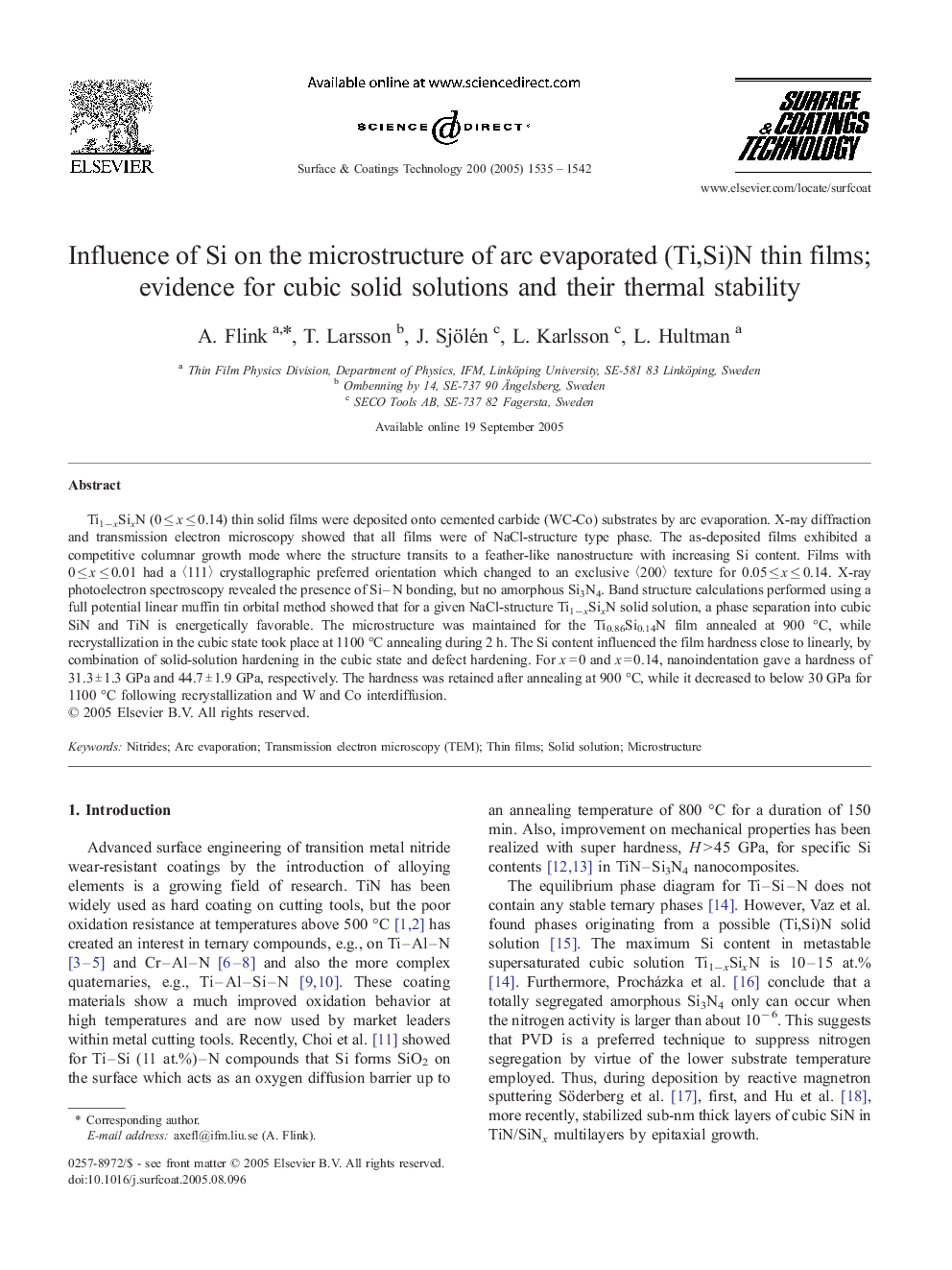| Article ID | Journal | Published Year | Pages | File Type |
|---|---|---|---|---|
| 1663662 | Surface and Coatings Technology | 2005 | 8 Pages |
Ti1−xSixN (0 ≤ x ≤ 0.14) thin solid films were deposited onto cemented carbide (WC-Co) substrates by arc evaporation. X-ray diffraction and transmission electron microscopy showed that all films were of NaCl-structure type phase. The as-deposited films exhibited a competitive columnar growth mode where the structure transits to a feather-like nanostructure with increasing Si content. Films with 0 ≤ x ≤ 0.01 had a 〈111〉 crystallographic preferred orientation which changed to an exclusive 〈200〉 texture for 0.05 ≤ x ≤ 0.14. X-ray photoelectron spectroscopy revealed the presence of Si–N bonding, but no amorphous Si3N4. Band structure calculations performed using a full potential linear muffin tin orbital method showed that for a given NaCl-structure Ti1−xSixN solid solution, a phase separation into cubic SiN and TiN is energetically favorable. The microstructure was maintained for the Ti0.86Si0.14N film annealed at 900 °C, while recrystallization in the cubic state took place at 1100 °C annealing during 2 h. The Si content influenced the film hardness close to linearly, by combination of solid-solution hardening in the cubic state and defect hardening. For x = 0 and x = 0.14, nanoindentation gave a hardness of 31.3 ± 1.3 GPa and 44.7 ± 1.9 GPa, respectively. The hardness was retained after annealing at 900 °C, while it decreased to below 30 GPa for 1100 °C following recrystallization and W and Co interdiffusion.
